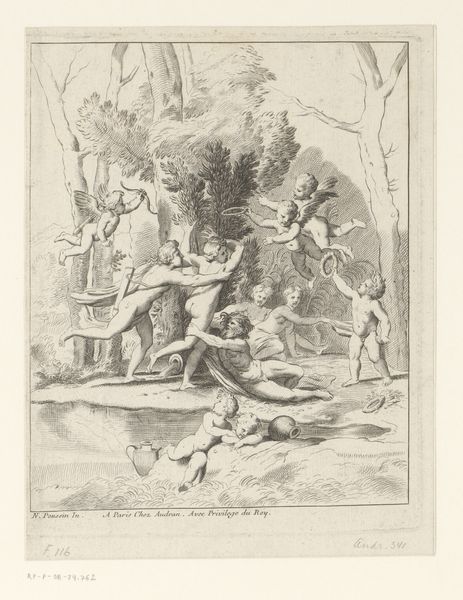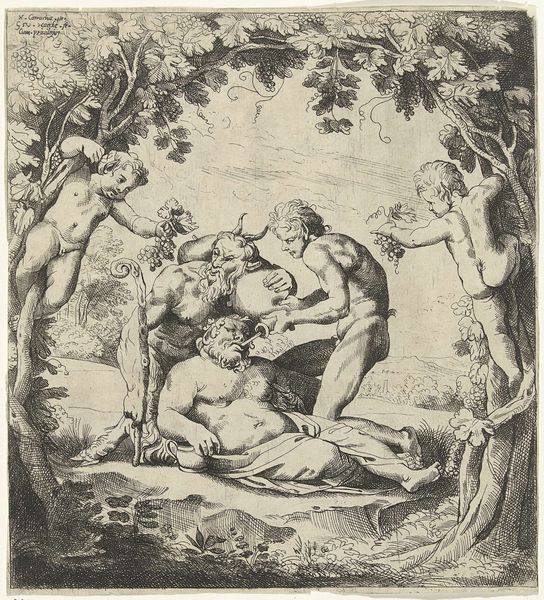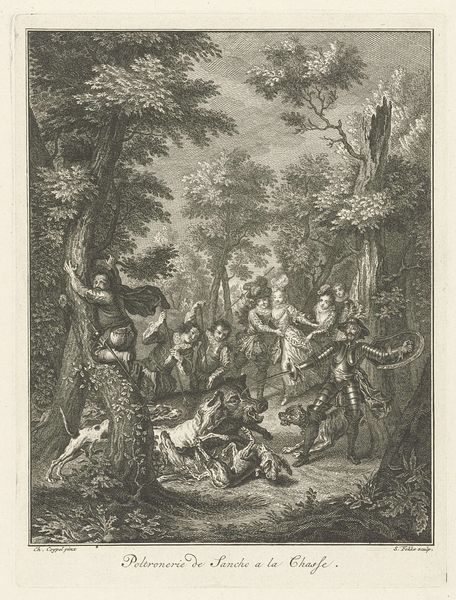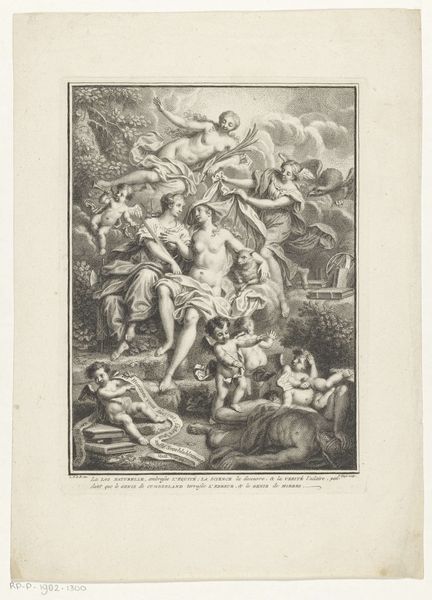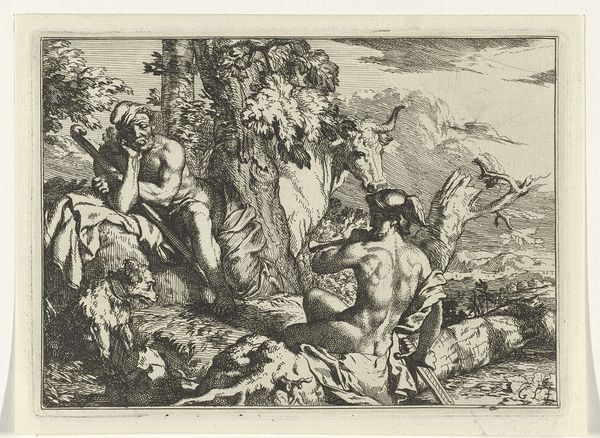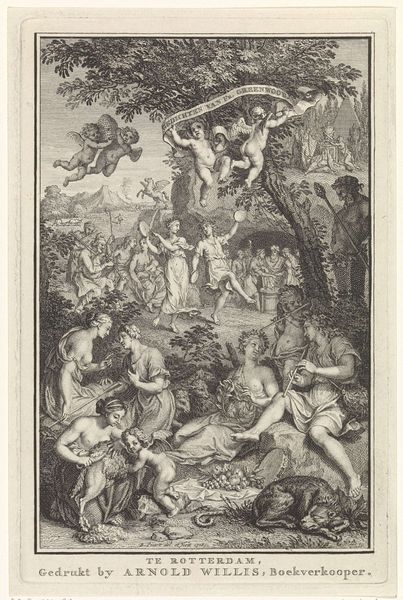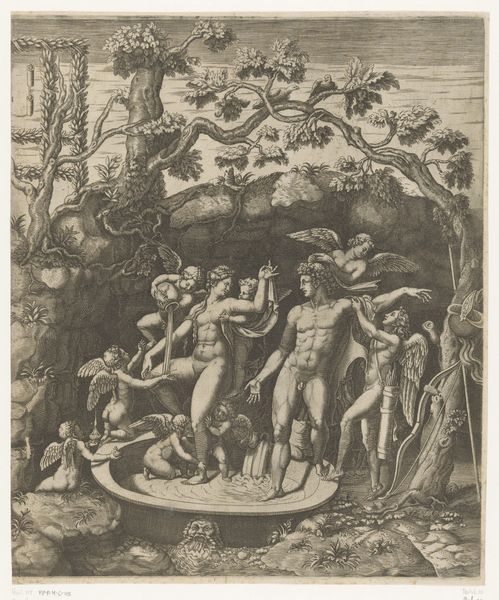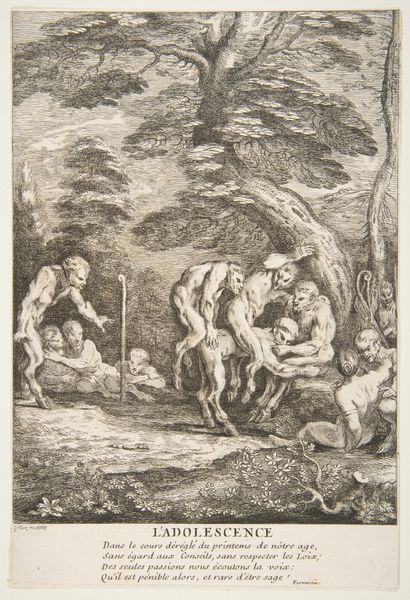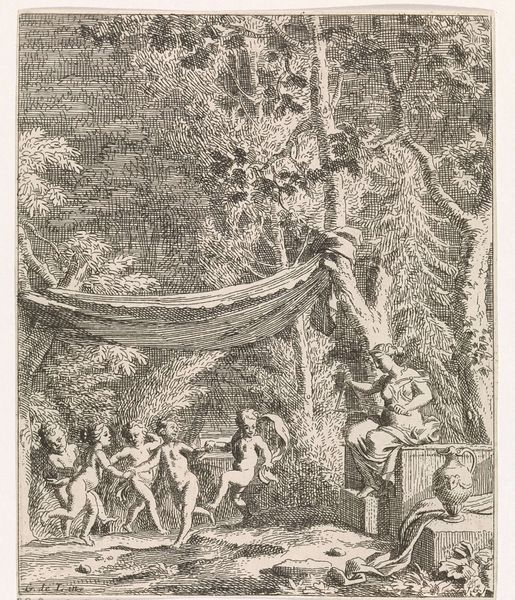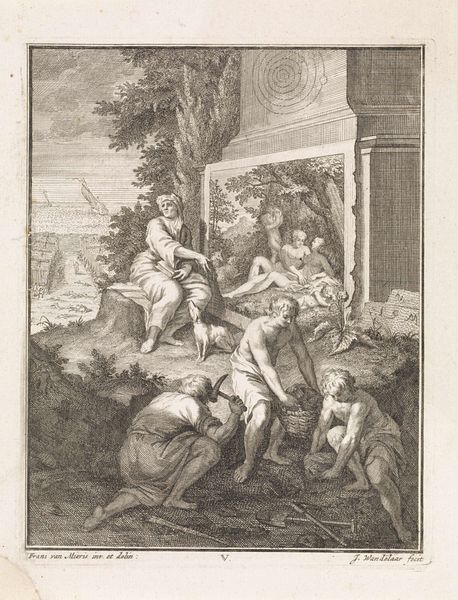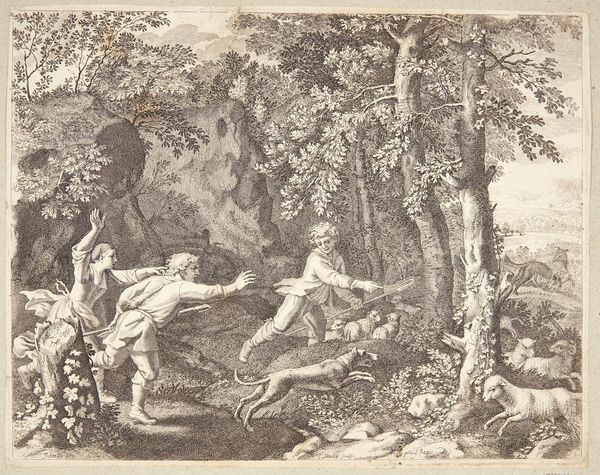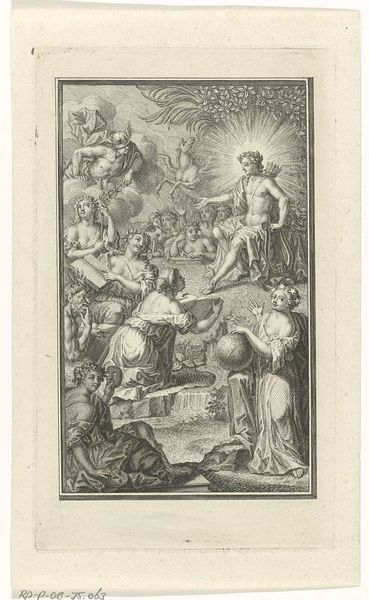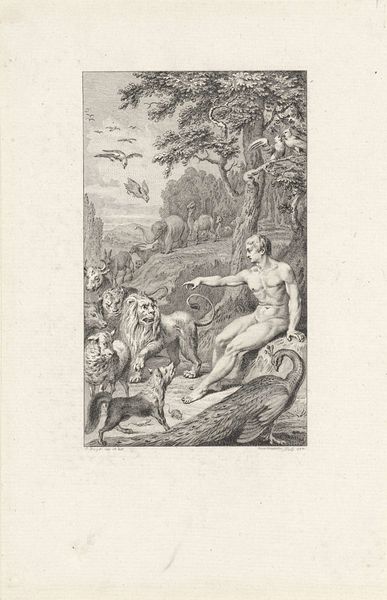
drawing, print, etching
#
drawing
#
baroque
# print
#
etching
#
landscape
#
child
#
genre-painting
Dimensions: image: 9 1/4 x 6 1/4 in. (23.5 x 15.8 cm), trimmed to image
Copyright: Public Domain
This print, titled "Adolescence," was created by Claude Gillot using etching techniques. Typically, an etching starts with a metal plate coated in wax. The artist then scratches a design into the wax, exposing the metal. When acid is applied, it bites into the exposed lines, creating grooves. Ink is applied to the plate, filling the grooves, and then the surface is wiped clean. Finally, paper is pressed onto the plate, transferring the inked image. Here, the varying line weights and densities suggest different depths of etching, creating a rich tonal range. The texture of the paper itself adds to the overall effect. But beyond the technical aspects, prints like these were key to the circulation of imagery in the 18th century, influencing taste and setting social standards. Etchings democratized art, making it accessible to a wider audience beyond the wealthy elite who could afford paintings. The amount of work involved in the production process reflects broader shifts in labor and consumption during this period.
Comments
No comments
Be the first to comment and join the conversation on the ultimate creative platform.
